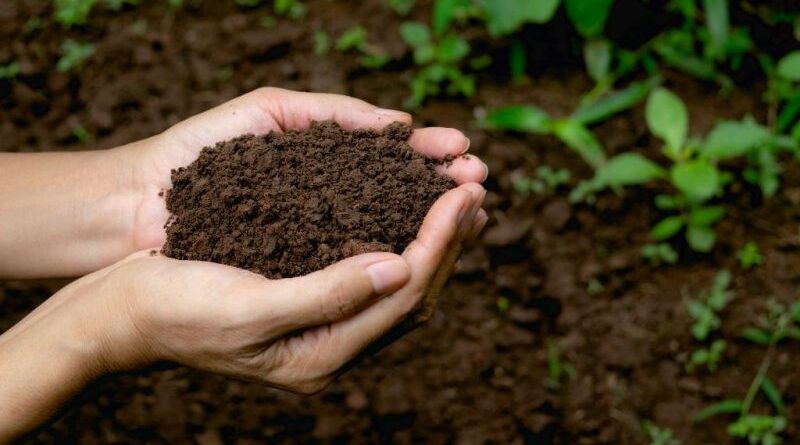What Are Soil Mites – Friend or Foe? – Plant Care Today
Soil mites are tiny creatures that live in the soil and help to aerate and break down organic matter. They are an important part of the soil food web and provide many benefits to plants. While most soil mites are beneficial, there are a few types that can cause problems for plants. These soil mites feed on plant roots and can damage or kill the plant. In this article, we will discuss the different types of soil mites, their effects on plants, and how to control them.
You may not know it, but there are creatures living on your soil right now. These small, 8-legged arthropods are called soil mites, and they play an important role in the health of your plants. Soil mites are found in nearly all soils, especially those that are rich in organic matter. They feed on decaying plant matter and fungi, which helps to break down these materials and release nutrients into the soil. This makes them an important part of the decomposition process. But not all soil mites are beneficial to plants. Some species of soil mites can damage plant roots and stunt growth. In this article, we’ll take a closer look at both kinds of soil mites and how to tell them apart.
You’re probably familiar with the term “dust mite,” but what about soil mites? These tiny creatures are quite common in gardens and yards and can either be helpful or harmful to your plants. In this article, we will explore what soil mites are, what they do, and how to tell if they are friends or foes. ###
What are Soil Mites?
There are over 10,000 different species of mites. Most of these mites are beneficial to the environment, preying on other pests or helping to decompose organic matter. However, there are a few species of mites that can cause problems for gardeners. These problem mites are often referred to as “soil mites.”
Soil mites are very small, usually less than 1/20 of an inch long. They range in color from light brown to almost black and have slightly flattened bodies. Soil mites live in the top layer of soil, where they feed on decaying organic matter and other small insects. In gardens, they can sometimes be found feeding on newly planted seedlings or young plants.
While soil mites themselves are not harmful to plants, their feeding can damage young plants and cause them to wilt or die. In large numbers, soil mites can also make it difficult for seeds to germinate and seedlings to grow. If you suspect that you have a problem with soil mites in your garden, there are a few things you can do to control them.
What do Soil Mites Do?
Soil mites are small, spider-like creatures that live in the soil. They are beneficial to plants because they help aerate and improve drainage in the soil. Additionally, they help decompose organic matter and release nutrients back into the soil that plants can use for growth. Soil mites also provide a food source for other creatures, such as insects and spiders.
How to Get Rid of Soil Mites
If you’re noticing small mites in your potting soil, don’t panic! These tiny creatures are most likely soil mites, and while they’re not exactly harmful, some people prefer to get rid of them.
Soil mites are very small (usually less than 1mm long), but they can be seen with the naked eye. They’re typically white or translucent, and they move very quickly. Soil mites feed on organic matter in the soil, so they’re beneficial for plant growth. However, if you don’t like the idea of sharing your potting soil with these tiny creatures, there are a few things you can do to get rid of them.
The first step is to make sure that your potting soil is dry. Soil mites thrive in moist conditions, so keeping the soil dry will help to discourage them. If you live in a humid climate or have trouble keeping the soil dry, consider using a dehumidifier in your home or greenhouse.
You can also try adding some sand to your potting mix. Sand helps to improve drainage and aeration in the soil, making it less hospitable for soil mites. If you don’t want to add sand to your potting mix, you can try using perlite instead. Perlite is a lightweight volcanic rock that helps improve drainage and aeration in the soil without changing its structure too much.
Finally, you can try treating your potting mix
Are Soil Mites Harmful to Humans?
Soil mites are very small creatures that live in the top layer of soil. They are members of the arachnid family, which includes spiders and ticks. Soil mites are harmless to humans and play an important role in the ecosystem.
Soil mites help break down organic matter, aerate the soil, and provide food for other animals. They are an important part of the food chain and help keep the soil healthy. Without them, the soil would become compact and unhealthy.
While they are beneficial to the environment, some people may be allergic to them. If you have a severe reaction to them, it is best to consult a doctor.
How to Prevent Soil Mites
Soil mites are tiny creatures that live in the soil and feed on organic matter. They can be beneficial to your plants by aerating the soil and breaking down organic matter, but they can also become a nuisance if they build up in large numbers.
There are a few things you can do to prevent soil mites from becoming a problem in your garden:
– Avoid over-watering your plants. Soil mites thrive in moist conditions, so keeping the soil on the drier side will help discourage them.
– Remove debris and dead leaves from your garden bed. This will reduce the amount of organic matter that the mites can feed on.
– Apply a thin layer of mulch to the surface of the soil. This will help keep the moisture levels down and make it harder for the mites to move around in the soil.
Conclusion
Soil mites are tiny creatures that live in the soil and help break down organic matter. They can be either friends or foes, depending on their population levels. If there are too many soil mites, they can damage plant roots and stunt growth. However, if there are just enough soil mites, they can help improve plant health by aerating the soil and increasing drainage. Soil mites are an important part of the ecosystem and play a vital role in plant health.




